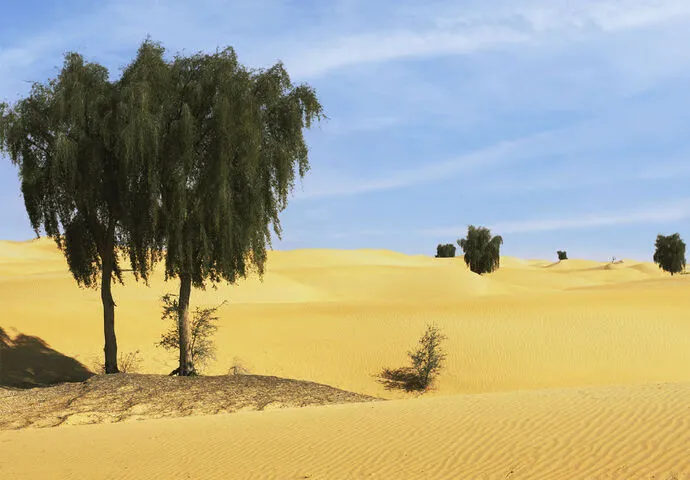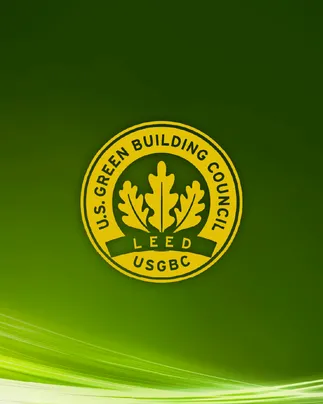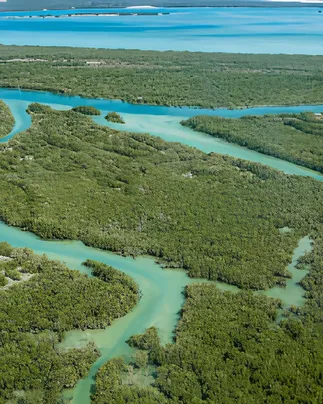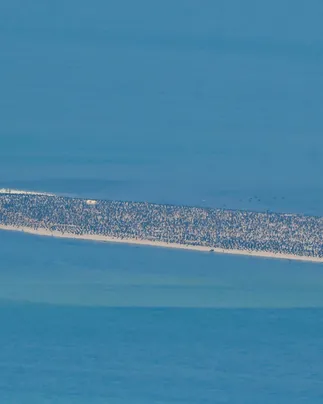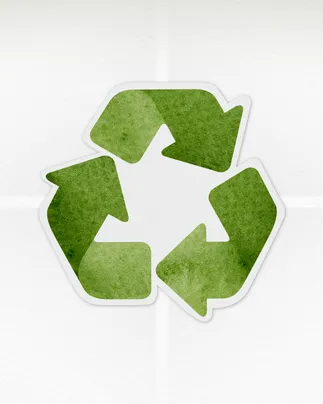The Environment Agency - Abu Dhabi (EAD) has launched an ambitious project aimed at numbering and coding old, threatened trees which have historical importance in their natural environments and habitats spread across the emirate of Abu Dhabi – a first for the Agency.
The Agency will implement the numbering programme through dual initiatives, which includes giving each tree an identification tag bearing serial numbers classified according to the tree type, in addition to electronically numbering trees and identifying them via serial codes linked to geographical databases. This process is being implemented in this integrated form for the first time at the local and regional levels.
Her Excellency, Dr Shaikha Salem Al Dhaheri, Secretary General of EAD, said: “This project aims to tag old Ghaf and Samar trees of important environmental and heritage values. EAD has begun to implement the programme by identifying the targeted tree species using satellite and aerial images, taking coordinates for each tree and storing them within the geographical databases of the Agency, followed by the actual numbering of the historical trees."
Her Excellency pointed out that the programme will start from its mountainous protected area “Jebel Hafeet National Park” in Al Ain city, where EAD has implemented a project to rehabilitate Samar trees in areas affected by climate change, illegal human violations and infrastructure development projects. The Agency plans to tag 1,500 Samar trees in the protected area in the first phase of the project, in addition to 1,500 Ghaf trees across the Emirate by the end of the year. The trees will be tagged with specially designed metal panels bearing the species details and tag identification numbers.
Dr Al Dhaheri also stated that through the project, EAD seeks to achieve its environmental and cultural objectives of protecting local trees from illegal activities. This will be done by providing tags on the trees. The project will also contribute to enhancing the quality of available data on local trees in natural habitats, a detailed assessment of the condition of each tree as well as other morphological information which will further help in assessing their resilience in combating desertification and mitigating impacts of climate change.
Mr. Ahmed Al Hashmi, Acting Executive Director, Terrestrial & Marine Biodiversity Sector of EAD, said: “The numbering of historical trees is one of the main pillars from which EAD will launch a long-term protection plan for local trees in Abu Dhabi to ensure their sustainability as a symbol of our natural heritage and distinguished cultural heritage.”
Al Hashmi pointed out that the natural Ghaf and Samar trees are an important component of the UAE’s plant biodiversity, as these two species were classified among the threatened plant species of Abu Dhabi.
He further stated that EAD has prepared detailed maps of the spread of both Ghaf and Samar trees in the emirate of Abu Dhabi – a first in the UAE – and has documented the distribution of all Ghaf and Samar trees using satellite image analysis.
Al Hashmi added that EAD also checked the number of trees that were monitored through aerial image surveys. Additionally, EAD managed to record around 100,000 wild trees and their presence in association to natural habitats, soil salinity and groundwater and their availability within the Emirate’s natural reserves network.
Al-Hashmi stressed that analysing this information will contribute to understanding the environmental requirements of these species and determining the extent of the dangers they are exposed to, whether due to human, natural or climatic activities, and thus providing protection for these trees and working to monitor them within their natural habitats to ensure their sustainability.
The numbering of the trees will be carried out using specially prepared metal panels, etched with a distinctive number mounted on the trees. This number is linked to an electronic number within the geographical databases of EAD, where the health status of the trees will be recorded, as well as their condition and the threats the trees are exposed to. The health of the tree will also be monitored with a strong emphasis on surveillance, inspections to control illegal activities.
The maps of the trees highlighting their distribution will be shared with the Agency’s various partners, to be taken into consideration when constructing various development projects to ensure their maximum protection.
These maps of the spread, distribution and enumeration of these trees will be shared with the Authority's various partners to be taken into consideration when constructing various development projects in a manner that ensures maximum protection for them.
Abu Dhabi has nearly 100,000 naturally growing Ghaf and Samar trees. Similar to other local trees, these two types are protected under Federal Law No. (24) of the year 1999. The regulation stipulates that these trees should not be felled; if necessary, it is obligatory that the trees be transported and replanted. One of the main threats to these species is habitat loss and degradation, the collection of wood for use as camping fuel, urban development, increased infrastructure, overgrazing and climate change.
It is noteworthy that EAD continues its efforts to preserve native plants and trees since its establishment, with the aim of sustaining and developing vegetation cover. Examples of the efforts include: over the past years, EAD has prepared maps of the spread of trees in the Emirate of Abu Dhabi, which is the first of its kind at the national and regional levels, through the use of satellite images. EAD has also been responsible for monitoring nearly 100,000 Ghaf and Samar trees naturally growing in the Emirate of Abu Dhabi. Furthermore, EAD manages the EAD's nursery in the Al Dhafra region, which includes more than 60 types of local plant species, with a production capacity of 500,000 seedlings annually which will be raised to 1 million seedlings annually through the establishment of the new central nursery. The produced seedlings are used in projects and programmes for habitat rehabilitation, as they are cultivated in protected areas.
In addition, through surveys and periodic evaluations conducted by the EAD, 432 species of native plants were monitored in the emirate, where the Agency has classified them according to the degree of threat as per the International Union for Conservation of Nature standards. EAD worked on increasing the protected areas within Sheikh Zayed Protected Areas Network managed by EAD to cover the ranges of the spread of important and threatened plant species to ensure their protection. This includes 19 protected areas, with 13 terrestrial protected area, representing 17% of the emirate's terrestrial area.


